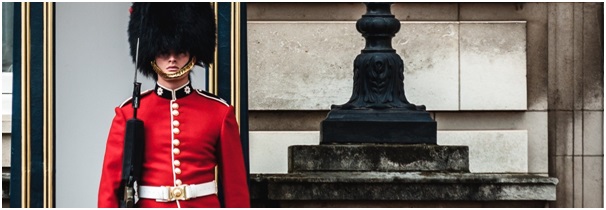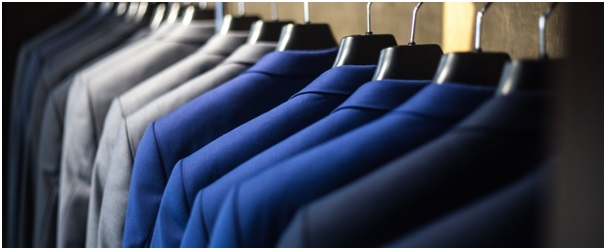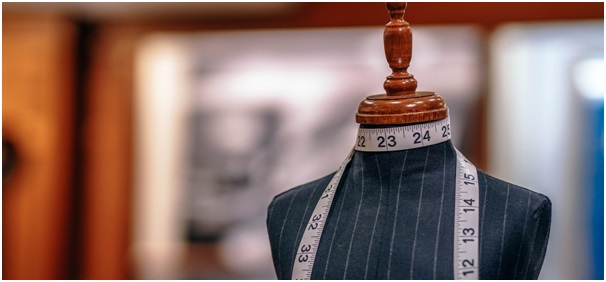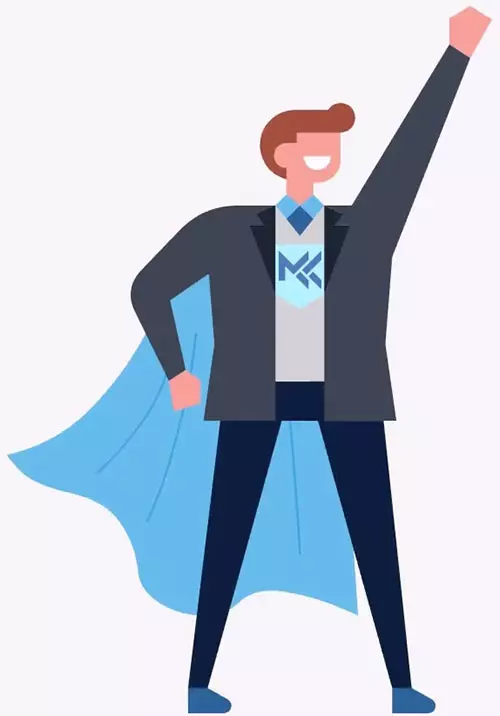The big day - first-round interview at your dream consulting firm!
You've done your homework and been through our MCC Academy course in full, getting to grips with all the theory and learning how to solve cases properly. On top of that, you've prepped for fit questions and have a compelling narrative explaining why you are perfect for the job.
In the run-up to today, you've done dozens of mock interviews with peers and even with real consultants. It's taken a lot of work, but you can now confidently say you have mastered consulting interview technique. This moment can very reasonably be seen as the culmination of your entire educational and professional life up to this point. Everything was leading up to this...
So, you have the interview and you think you do a really good job. You get through your case, come up with a good answer in good time and you deliver fluid, confident responses to all the fit questions. Great!
And then you don't get the job. Why? Because you dressed wrong!
Maybe this will sound absurd to you - especially if you are coming directly from a university environment where you have spent years with no real requirements on how you present yourself. However, those with more experience in the workplace will know the genuine importance of presentation generally and especially in interviews.
But WHY?
Being able to present yourself properly is a relevant consulting skill in itself - if you are going to be a consultant, you have to be trusted to represent the firm to clients. Dressing appropriately for different circumstances is a part of your social skills - it helps to show respect to others, to build rapport and just to show you know what's going on. If the client is paying thousands of dollars per day for you to be there, the least you can do is to look like you care.
Demonstrating to your interviewer that you understand these things is a proxy for your wider social awareness, character and general competence. Perhaps think of how you present yourself as an unspoken component of your fit interview. More directly, though, who is going to employ you and make you responsible for the fortunes of major corporations if you can't work out how to get dressed?
The Goal: Corporate Camouflage

We'll run through some specifics shortly, but really there are too many variables in play to definitively list everything. What it is really crucial is that you understand the general tone you are trying to strike and reasons why. Lists of things to wear or not are going to seem pretty arbitrary unless you understand the underlying rationale.
Now, there are a lot of pretty silly sayings around dressing for interviews etc, and these lead people totally astray. Remove from your head any enthusiastic notions of "dressing to impress", "dressing for the job you want, not the one you have", a lot of stuff like "dress smart, think smart" and any concept of "power dressing". Similarly, this is certainly not the time to be "fashionable".
In a professional interview of any kind, your clothes should be forgettable if anything. The rationale is pretty much the same as painting all your rooms cream if you are trying to sell your house. You want to be neutral but crisp. Effectively, you should not be "dressing to impress" etc, but really thinking more in terms of "corporate camouflage".
Anything that takes you away from "neutral" is as likely to be frowned upon as impress. Think about it - nobody is going to employ you because you were positively well dressed, but they very well might not hire you for being badly dressed.
Join thousands of other candidates cracking cases like pros
At MyConsultingCoach we teach you how to solve cases like a consultant Get startedDifferent Cultures and the Universal Safe Option

Every country has its own traditions around dress. Each different culture will allow more or less leeway on the bounds of what is acceptable in your interview. As we will note below, things like brown shoes and striped ties might be perfectly acceptable in some places and unacceptable others. Generally, the "rules" get more permissive as one moves geographically and culturally away from London, where probably the most restrictive culture prevails.
In this article then, we will set out a guide that will make sure you are perfectly dressed anywhere. This is the "core" mode of dress that will be the safest option wherever you are. So, perhaps you can get away with something else in your own region, but what we recommend here will always be considered acceptable without raising any eyebrows. (And if you're interviewing in the UK, follow this guide to the letter - no leeway for you!)
Let's go through a couple of outfits head-to-toe; one for men and one for women. Note that some of this might seem insultingly obvious, but we have assumed pretty much zero starting knowledge. We have helped a lot of people prep for interviews and have seen pretty much all the possible errors mentioned here be made by what are otherwise great candidates.
Men

For men, it's possible to be pretty precise about what is required. Let's jump straight in:
Suit
- This should be a solid navy or dark grey "standard" suit - single breasted, two or three button.
- No light grey or weird, lighter, indigo blues.
- No checks or pinstripes - checks are too casual and pinstripe is considered archaic now. In certain regions it also has associations with the most stereotyped investment bankers and (more historically now) Mafia membership that might have people laugh at you.
- Absolutely no black suits. We have seen another site recommending black suits to candidates and this is highly misleading. Black suits are not business-appropriate anywhere (with the apparent exception of Japan, where it seems black suits have some role in the workplace - even there, though, navy or dark grey should always be a safe choice).
- Get the basics of fit right - as a minimum make sure your jacket is long enough to cover your bottom ("fashion" jackets are often much shorter), trouser legs resting gently on your shoes - not too short and not overly long and "puddling" in piles of excess fabric (this will make you look like a kid trying on his dad's clothes).
- If you have to choose, resist trends and err towards things being slightly large rather than too tight. Being vacuum-packed into your clothes looks ridiculous and, if nothing else, you will feel and look more comfortable with a little space to move naturally.
Shirt
- Default is white.
- You should also get away with a solid LIGHT blue - the
lighter the better. This might flatter you more if you are very
pale and look washed out by bright white - not looking ill is probably
worth straying slightly from paradigm shirt choice. If you go for a blue
shirt, absolutely avoid contrast white collar and cuffs (these have
much the same sleazy/archaic connotations of pinstripe suits, but probably worse).
- Standard collar - no funny shapes, pins, rounded ends or extreme cutaway collars. A button down collar might be acceptable in some parts of North America, but a standard "spread" collar will always be the safest and most appropriate. If your shirt has slots for them, it's a good idea to insert your collar stiffeners to stop the collar from curling around your tie knot or under your lapels.
- Avoid pink. You will probably see pink shirts in offices, but it is usually considered slightly more casual than blue and some people just plain don't like it. Not for interview day.
- Avoid stripes. A very fine, business-appropriate, blue and white stripe would maybe work, but if you have to read this article in the first place, avoid them, as they will require judgement to get right. (As a nerdy side-note, historically, a striped shirt might be one of the only items that might be slightly easier to carry off in the UK than elsewhere, at least for day-to-day office wear, as the British tend to favour slightly bolder shirts than other cultures. However, London these days is a sea of solid blue and white shirts, so perhaps no longer.)
- Avoid checks - even small ones - anything big enough not to just be perceived as a texture will almost invariably be too casual, especially for interview (the relevant tradition here is that checks are for the country, not the city).
- Opt for a "normal", smooth fabric (a poplin or subtle twill in more technical terms). Avoid odd textures or woven patterns. One reason this needs to be mentioned as the standard, North American "Oxford cloth button down" that will be hanging in a lot of recent grads' wardrobes is likely too casual for interview.
- You should keep your jacket on throughout, so it is not important if your shirt is a little on the generously fitted side. However, absolutely make sure that it is not too tight. Nobody wants to see bits of flesh peeking out between buttons.
- Ideally, your shirt sleeves should be long enough to extend out of the end of your jacket sleeve by a centimetre or two. If you need them, shirts with extra long sleeves are easy to find.
- Double ("French") or single cuffs are a matter of choice, though you should probably default to single if you have the choice. Double will be a bit more popular in the UK than elsewhere in the world - but it's not worth worrying about either way.
- If you do wear cufflinks, make sure they are conservative silk knots or plain metal - avoid anything "novelty" (even if they're your lucky ones!).
Pro Tip - If you are eating before interview or perhaps during a day of interviews, be very very careful not to spill anything down the front of your white shirt. Minimise danger and choose a cheese sandwich over spaghetti bolognese.
Tie
- First, wear one. Your interviewer might not bother - they can do what they like. You have to.
- Normal width - no skinny ties.
- No knitted, wool or otherwise heavily textured ties.
- Tie a small, standard knot (If you have to Google knots, a four-in-hand is perfect and anything larger than a half-Windsor will make you look like a used car salesman). Check it is firmly in place with your top shirt button done before you go in.
- The safest colour choice is probably something in dark blue/navy. Lighter blues and a dark grey/silver can also be great, though this will be more tricky to get right, so possibly worth avoiding for that reason. Navy ties do not clash with navy suits.
- In terms of pattern, a tie can be a solid, a subtle, small-scale pattern like a pindot or a very restrained "foulard". As a good rule of thumb, if you can still see the pattern clearly from a few paces away, it is too bold. A solid navy tie with a navy suit might seem boring, but it is beyond reproach.
- Small, Hermes-style illustrated patterns might be common and acceptable for business in certain places, but will likely be considered too casual for interview. You also run the risk of seeming like you're trying to show off affluence.
- Now, this might cause a stir, but we recommend avoiding striped ties. They are culturally acceptable in the US, but will still be hard to reliably select to be sufficiently conservative. Outside the US, stripes are often controversial. Especially in the UK, you should absolutely not wear a striped tie to interview (or really for business at all). Striped ties originally come from army regiments and schools and are traditionally something that must be earned. In the US, they have lost this meaning. However, in other countries, you run the risk of effectively pretending to have served with a certain military unit or gone to a certain school that you didn't. For this reason, and simply because they are brash, striped ties are a faux pas. You might think this is absurd, but your interviewer might not. In any case, even if you are entitled to a certain striped tie, they are still generally considered too casual for business in the UK.
- You can only pull off a bowtie if you have a Nobel Prize in Economics or if you get your clown make-up just right...
Shoes
- Black leather lace-ups.
- The paradigm interview shoe is a black leather, toecap "Oxford", but as long as it is black, well polished and "normal"/conservative, you will be fine.
- Very plain, sleek, black penny loafers should also be fine, especially if you already own those. These would require some judgement, though.
- Otherwise, no boots, no square toes, no pointy toes, no monk straps, no suede, no snakeskin, no patent, no Gucci horsebit loafers...
- Whichever shoes you wear, make sure they are clean. Learn how to polish shoes properly, using black shoe polish rather than the "neutral" creams etc that are sometimes used, but that never give great results. This will make your shoes look significantly better and, as a bonus, they'll also last longer when you start the job.
Socks

- Go for navy or grey and avoid patterns. To be frank, though, as long as these are a solid dark colour, probably nobody will notice or care.
- The notionally optimal choice is to match the colour of your socks to the colour of your trousers (so, navy or grey) rather than your shoes (black in this case). The rationale here is that it looks better to have a longer leg than a weirdly long foot.
- Especially in the UK, black socks smack slightly of school uniforms/teenagers - but it's not worth worrying about.
- Bright red socks will not make you look "cool"...
Accessories
- In terms of accessories, less is definitely more. For men, no jewellery at all except a wedding band, cufflinks if they are required, or anything required by your religion.
- Regarding watches, it isn't a huge issue either way, but the safest thing to do is probably not to wear one at all. A lot of people in business care a lot about their watches, and will probably notice whatever you have on. As discussed above, pretty well anything that gets noticed will be as likely to yield opprobrium as approval. This is certainly true of watches and it is all simply not worth the risk of your interviewer loathing (or maybe even being jealous of) what you have on.
- You might habitually wear a signet or family ring, but these can be divisive items and are best left at home for the day.
Hair/grooming
- Unless your religion dictates otherwise, a traditional, conservative, "business" haircut is the default. Management consulting is not the place for a man bun or bleached tips.
- No stubble - clean-shaven or beard. Unless your beard is for religious/cultural reasons, you might want to consider shaving.
Pro-Tip - If it has been more than two weeks since your last haircut, consider getting a neck trim (where a barber tidies up the fluff on the back of your neck) a day or two day before the interview . A lot of places will do this for free, especially if you are a regular, and it makes you look quite a bit more tidy very quickly.
All the best resources in one place!
Our platform is unique in collecting everything you need to ace your interview in one convenient location, for a truly joined up experience. Sign upWomen

Dressing for interview is both more and less difficult for women. There are fewer precise rules to be broken, but this means that there is also less certainty about what individuals should be wearing and a larger role for personal judgement (you will notice more qualifiers like " generally" and "probably" in this section).
Suit
- The default for women is a skirt or trouser suit as they prefer, though the former is more standard.
- A separate jacket and skirt/trousers can also be worn, assuming these are both in professional colours. A jacket should always be present, though and separates are harder to judge.
- Separates don't need to match in terms of being the exact same colour, but they shouldn't clash.
- Whilst the same navy and dark grey advised for men will always be safe, there will slightly be more leeway on colour for women. Lighter shades of grey will likely be permissible, but the single major difference is that black is a fully acceptable business colour for women (though beware, as black might not flatter paler skin).
- Female clothes obviously tend to be more fitted, but you should still avoid anything noticeably too-tight.
Shirt/blouse
- Much the same as the men here, the default will be a crisp white shirt/blouse - though to be worn open in the absence of a tie.
- Again, light blue is a fine alternative.
- Women might find it easier to get away with a subtle stripe, as their outfits will be less "busy" without ties.
- Avoid designs that are overly ornamental or that are excessively revealing, either by being too open or by being translucent. Similarly, only undo a reasonable number of buttons. If in doubt, err towards being buttoned up.
- As with suits or jackets avoid anything that is too tight.
Shoes
- Once again, this is broadly similar to the male dress code - the default is a traditional black leather shoe.
- Navy blue leather would also be a viable option for women.
- The design should be conservative, with a closed toe and no extreme high heels.
- Flats or a small heel are both fine, and many women will actively prefer a slight heel in a professional context.
- Any buckles or similar shiny detailing should be kept to a minimum.
Accessories
- As for the men, accessories should be kept to a minimum. For women, this will generally mean no more than simple earrings and a fine necklace.
- Simple pieces in plain metal, pearls etc will be appropriately neutral. Avoid anything overly showy - if you were going to turn up draped in diamonds, you probably don't need the salary anyway.
- Wedding and engagement rings are obviously always acceptable, as is any jewellery required by a religion.
- The same issues around watches will apply, though perhaps with opinions being less fierce as regards female watches.
Hair and Make-up

- Make-up should be low-key where it is worn at all. It might look good, but it's probably not the moment for blood-red lipstick, heavily shaded eyes and contouring.
- Similarly, hair should be simple. It can be worn down or tied back as preferred, though should be fairly conservative and "sleek" if the former.
Boring is good!
Now, all of this might seem boring, and you might think that adding some slightly unusual but - you think - "nice" element to your outfit will distinguish you amongst the pool of applicants. Maybe it will. Maybe.
In reality, anything "different" could well be regarded as totally inappropriate. In our resume guide, we strongly advised against any departure from standard typeface/formatting/structure, as it might vex the reader and see your application discarded in short order. The exact same is true of how you present yourself.
Nobody cares about your opinions...
On a slightly harsh-sounding note, interview is also not the time to show how forward-thinking or individualistic you are. Maybe you're a cool dude Californian-type and think that in future everyone will only wear flip-flops and basketball shorts to the office. Maybe (probably) you're right, but chances are, if you turn up without a tie or because you think they're old-fashioned, you won't get the job. At the other end of the stick, if you read too many fora and think a man is never really dressed until he's wearing a pocket square, leave it at home for the day if you want to actually have the salary to buy all that silk.
Don't spend a fortune
Especially if you are coming straight from university, don't feel like you need to break the bank on an interview outfit. If you're going to spend money to help get a consulting job, coaching from a real consultant would be a much better investment (we have actually run the numbers on that here).
It is important to realise that appropriate does not mean expensive. All things being equal, a guy in a $100 basic navy suit and a $25 white shirt is going to get hired over someone else in some skin-tight, light grey, checked "fashion" suit that cost him $2000+.
Bearing
This is a little outside the strict mandate of this article and will overlap with considerations around fit interviews, but (as social psychologists will attest) the way you carry yourself can have just as profound an impact on how you are perceived as how you dress.
Generally, you should aim for an upright, cheery, bright, open and interested demeanour - though avoid going too far and coming off as cocky or imperious.
We won't try and dispense advice on how to fix your dysfunctional posture, but do pay some attention to how you are holding yourself and how this will be perceived by others. Try to stand and sit up straight and to keep your shoulders from crunching up as you get nervous.
Pay some attention to how you are sitting when you are waiting to be collected for interview. Don't slump in your chair and certainly don't sit with your legs spread. When your interviewer approaches, stand up to firmly (not crushingly!) shake their hand, making eye contact and smiling.
Hygiene
This should go without saying, but you should be generally clean and conform to the basic norms of personal hygiene. Nails should be clean and tidy (and freshly cut short for men at least) and it's probably a good idea to deal with any mono-brow or similar.
Few things make a worse impression than bad breath. Have a mint before you go into the building and maybe during any breaks between interviews (not chewing gum in case you are caught with nowhere to dispose of it). Similarly, make sure you don't have anything in your teeth if you eat.
Perhaps you get sweaty palms when you are nervous. Don't worry - this is perfectly normal. If you can, discretely rub your right hand on your trousers/skirt just before the start and end of the interview to get rid of any clamminess. Think of your poor interviewer pressing the flesh all day and cut them a break!
Next Steps
Of course, you won't be given a job just for choosing the right tie. Everything we have said here is just setting in place the basic conditions for a good interview. If you want to land a consulting job, it will first and foremost be because you ace your case and fit interviews.
Your first port of call for the former should be our comprehensive introduction to case interviews, where we explain how consulting interviews work and how you can plan to prep for them effectively. Crucially, we explain how our infinitely flexible Problem Driven Structure method for cracking cases dramatically outperforms traditional "framework-based" approaches - whose rigid inability to accommodate novelty renders them dysfunctional in many cases.
As noted a couple of times in this article, issues of presentation significantly overlap with the soft/social skills that are assessed in fit interviews. You can learn more about fit questions and how they assess both your soft skills and motivation to be a consultant in our introduction to fit interviews.
The single best place to learn absolutely everything you need to know to ace both case and fit interviews is our MCC Academy course. Nothing will get you fully up to speed more efficiently! There, we cover all the background skills and knowledge you'll need, plus how to deploy them to solve cases using our Problem Driven Structure method. The course also includes a comprehensive set of lessons on how to prep for fit interview. Teaching is delivered in high-quality, animated video lessons (with several available to preview here) and accompanied by exercises to help you ingrain and master what you learn.

